Abstract
In Experiment I, pigeons were first trained on simultaneous matching-to-sample with either color stimuli or form stimuli, and then shifted to stimuli on the other dimension. Matching performance in the first session with stimuli on a given dimension was not affected by prior matching training with stimuli on the other dimension. However, in the first six color-matching sessions pooled, birds with prior form-matching training performed significantly better than birds without any prior matching training. In Experiment II, birds with experience matching both colors and forms in separate sessions were tested with novel stimulus configurations involving either novel stimuli or novel combinations of familiar colors and forms. Matching performance was not affected by novel stimulus configurations, except that performance dropped to a chance level or below when the standard stimulus was novel. In Experiments II, III, and IV, three of four tests did not show any effect of prior reinforcement of pecks at a novel stimulus, presented alone, on subsequent matching of that stimulus. The results were interpreted as indicating that matching performance in pigeons depends on the learning of stimulus-response chains involving the specific stimuli employed during training. An incidental observation in Experiments I and II was that there were typically more excess pecks at the standard stimulus during form-matching sessions than during color-matching sessions, which may be related to the fact that form matching is more difficult than color matching.
Full text
PDF
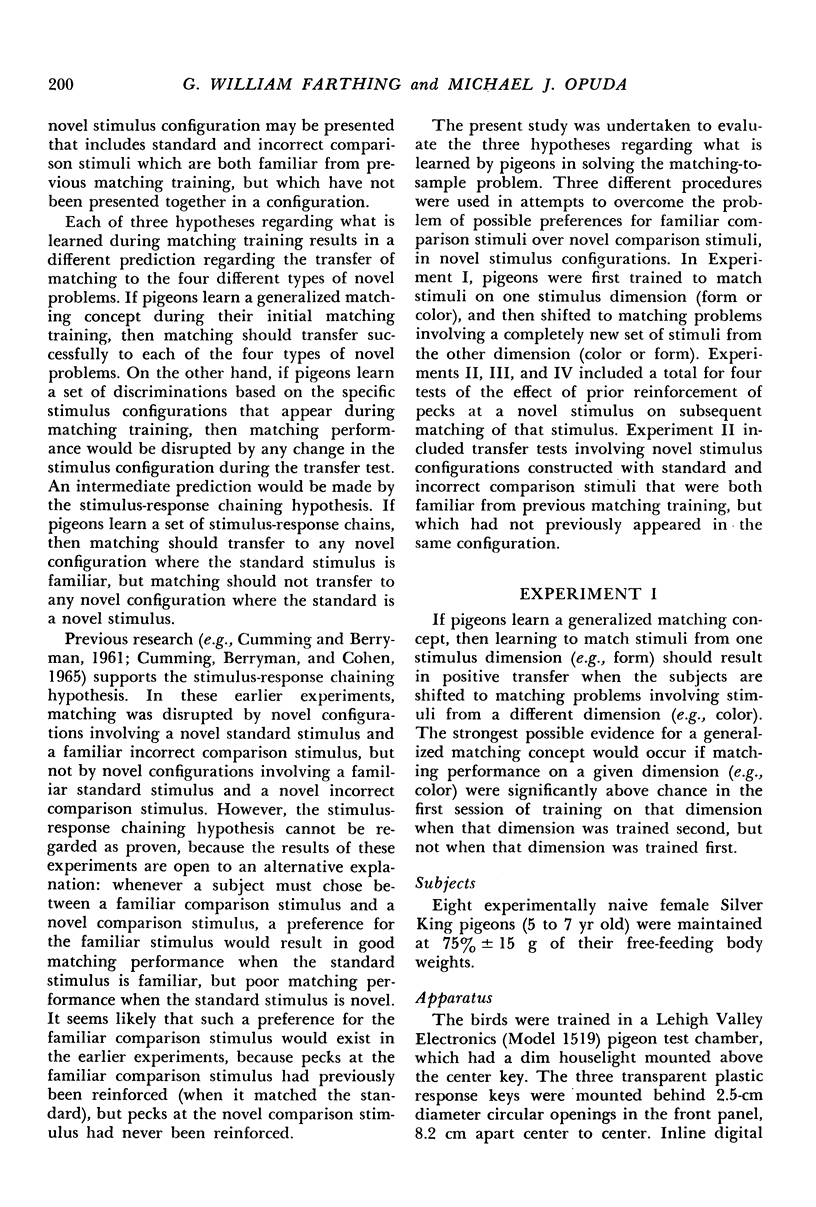
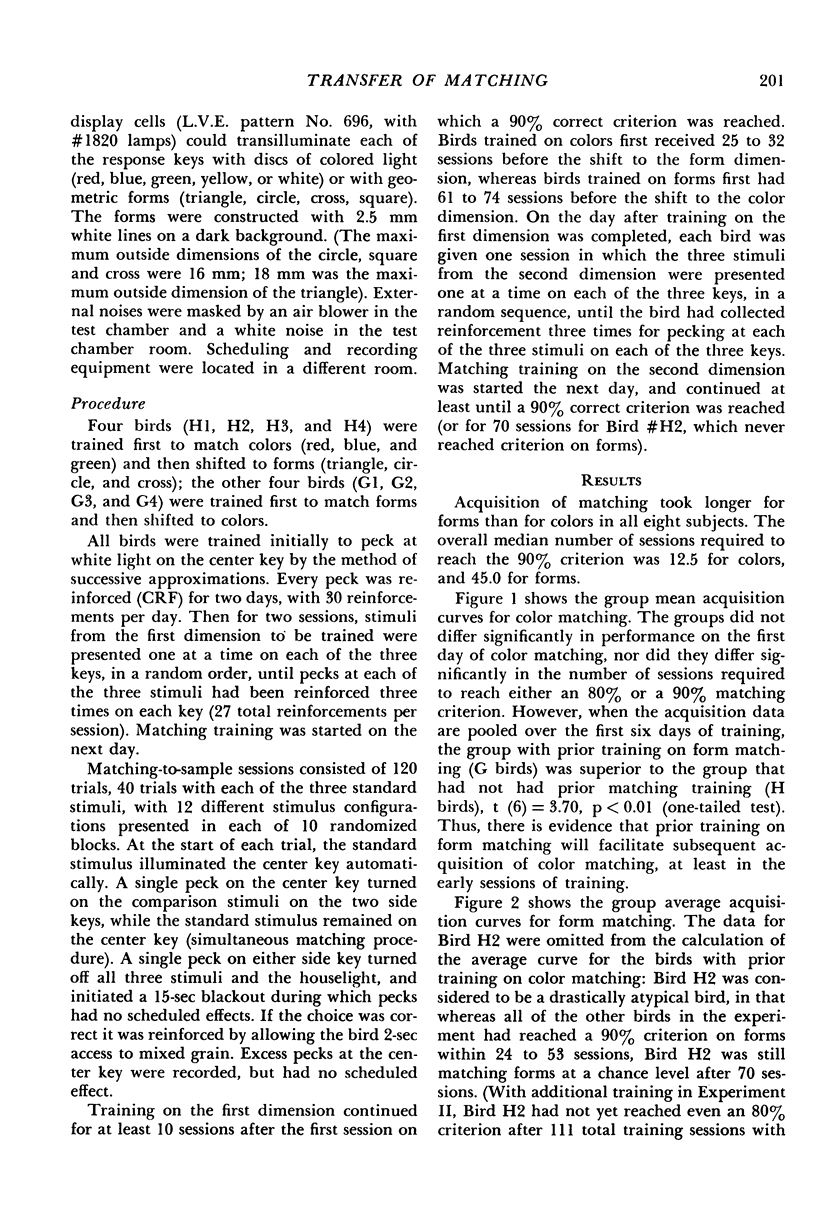
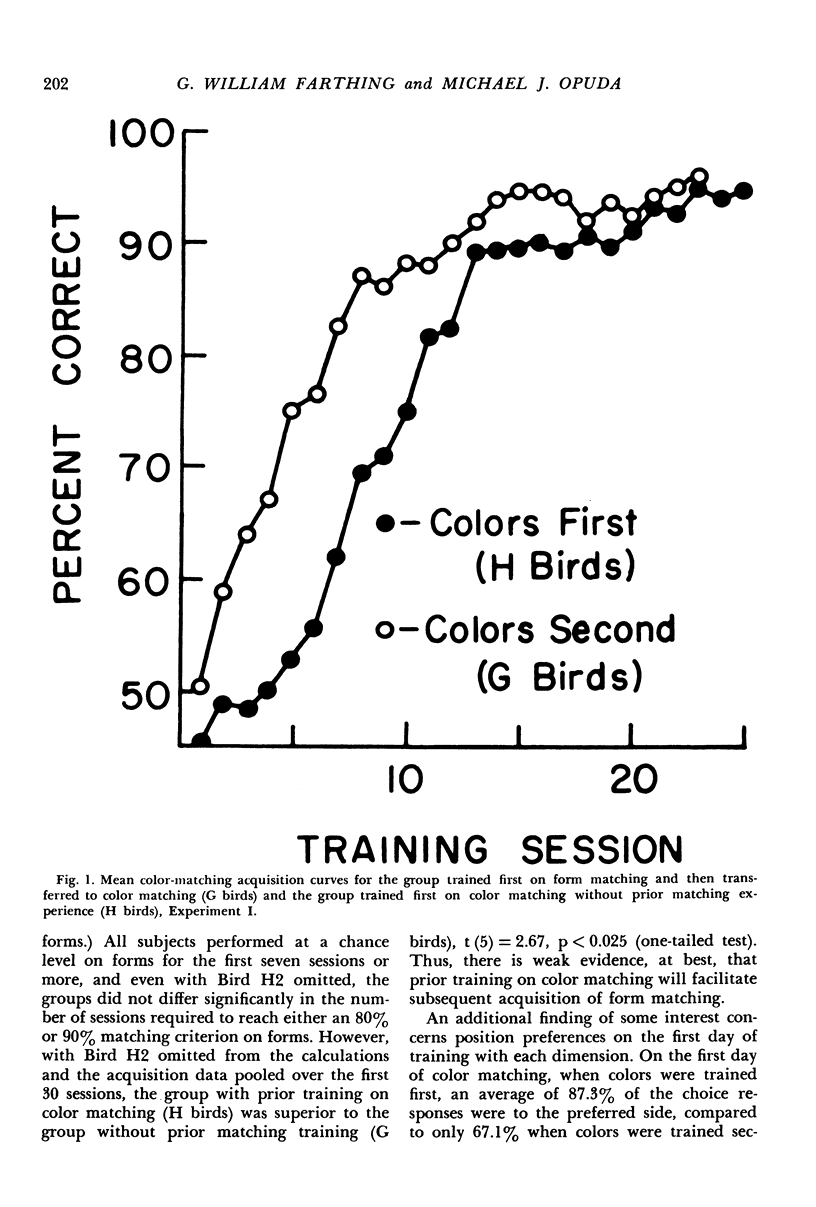
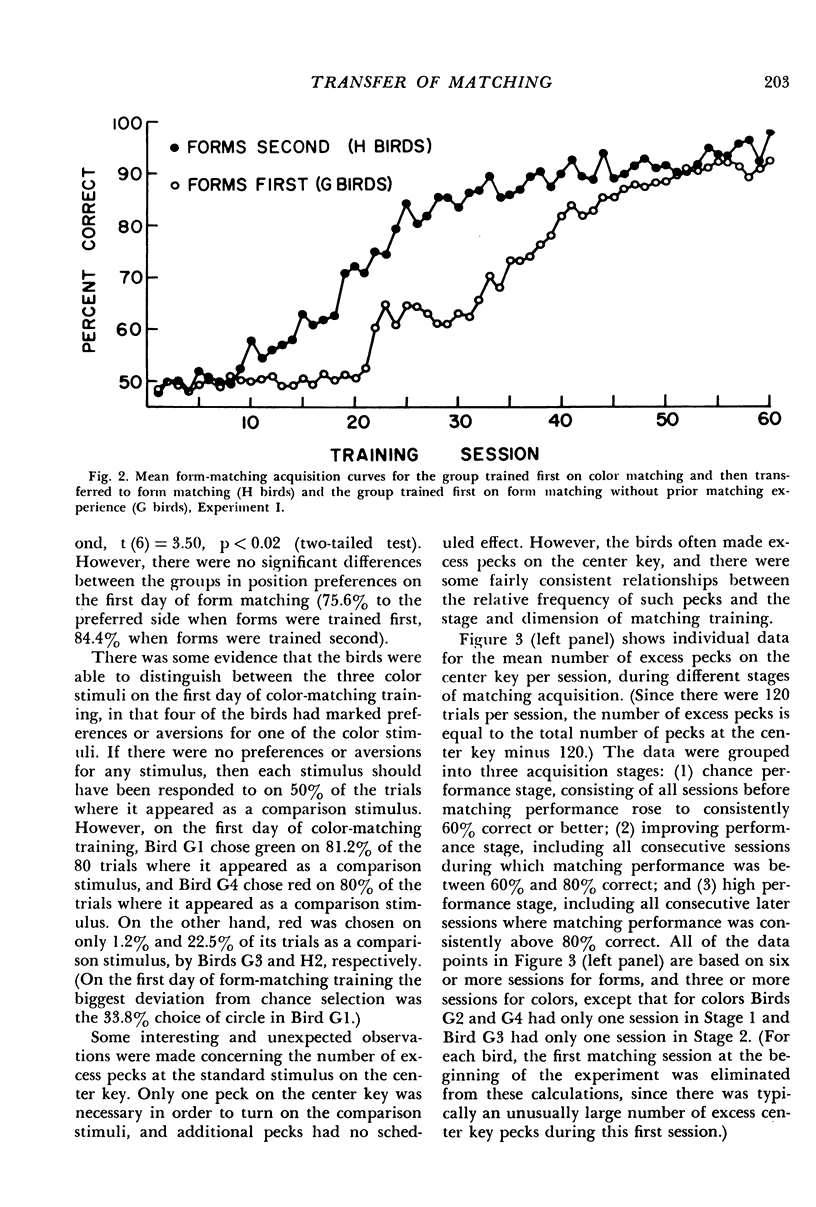
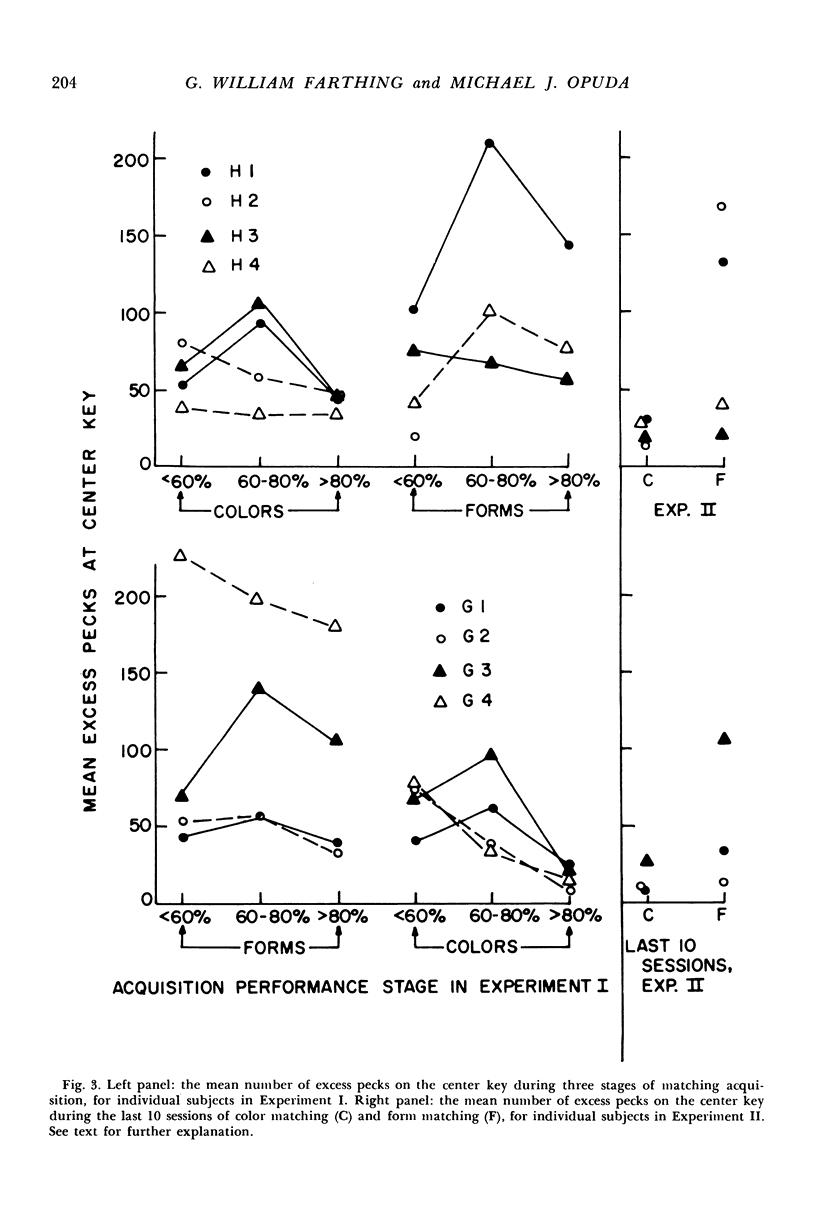
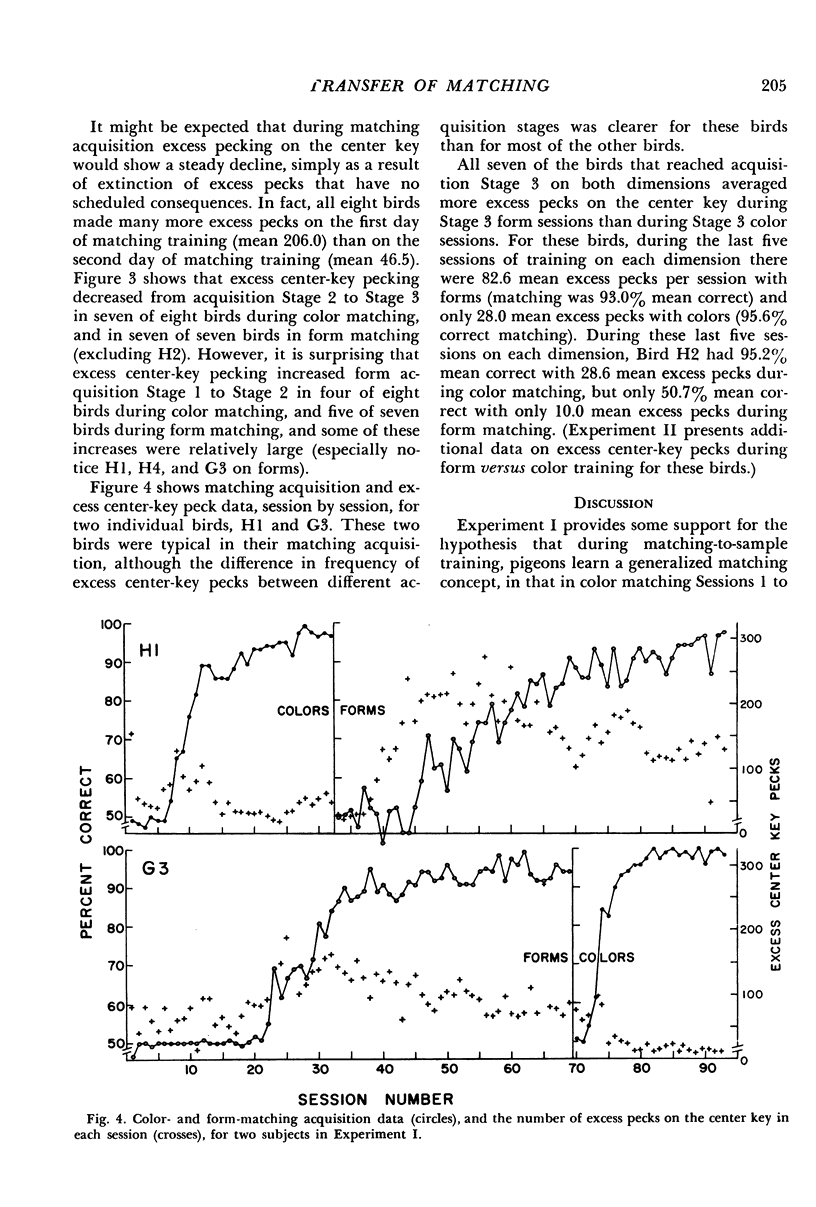


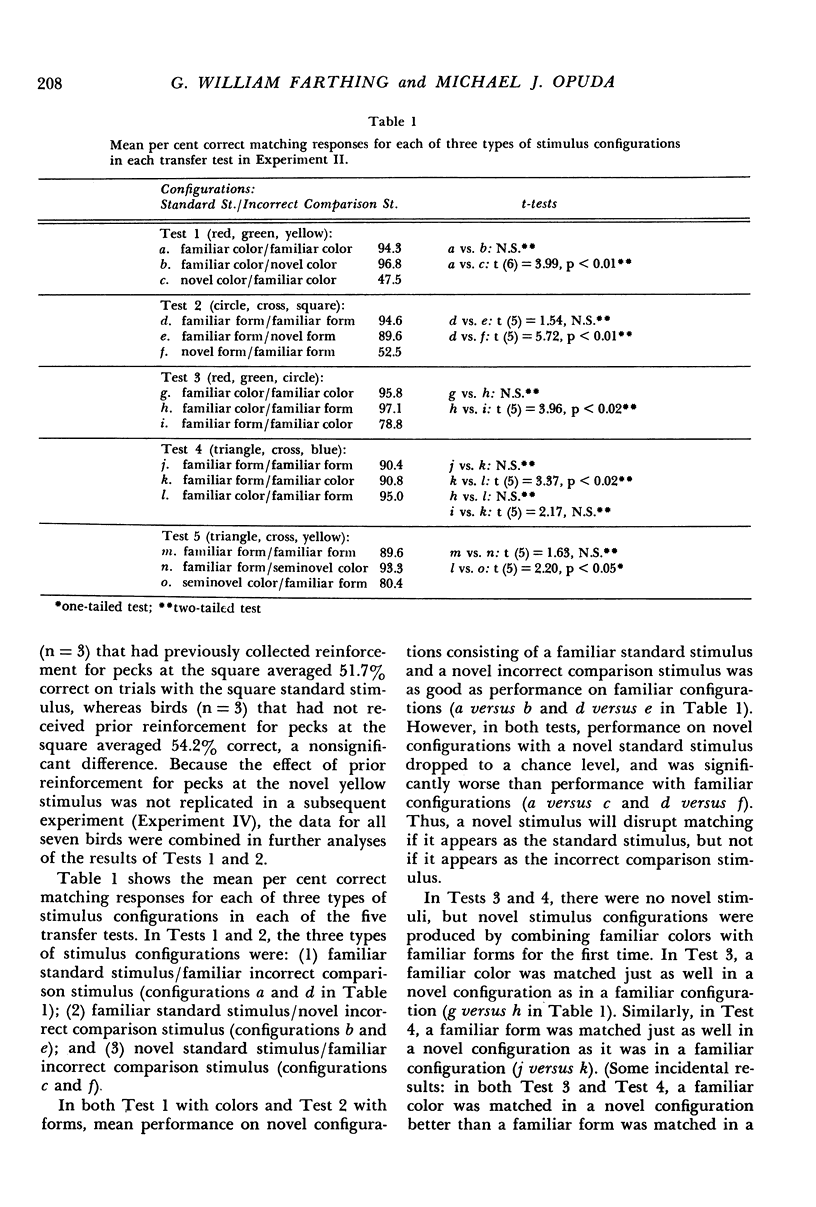
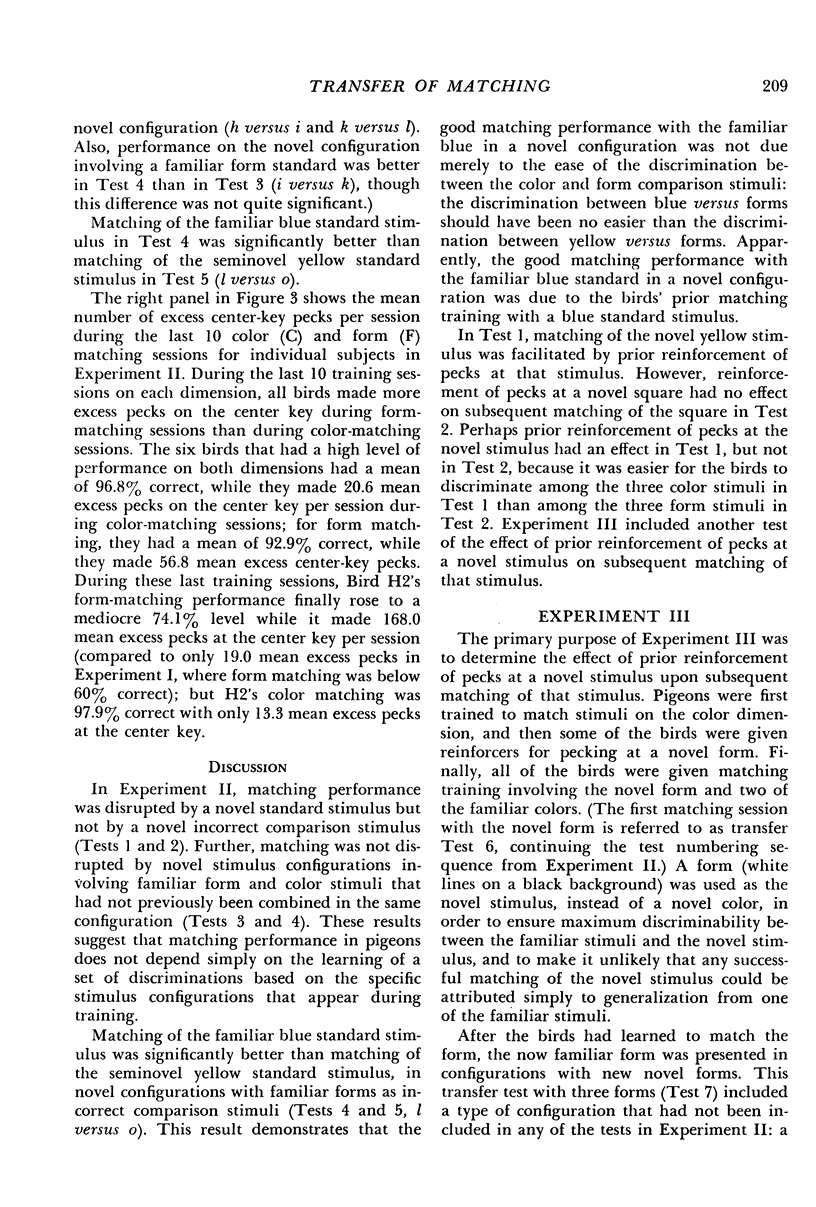


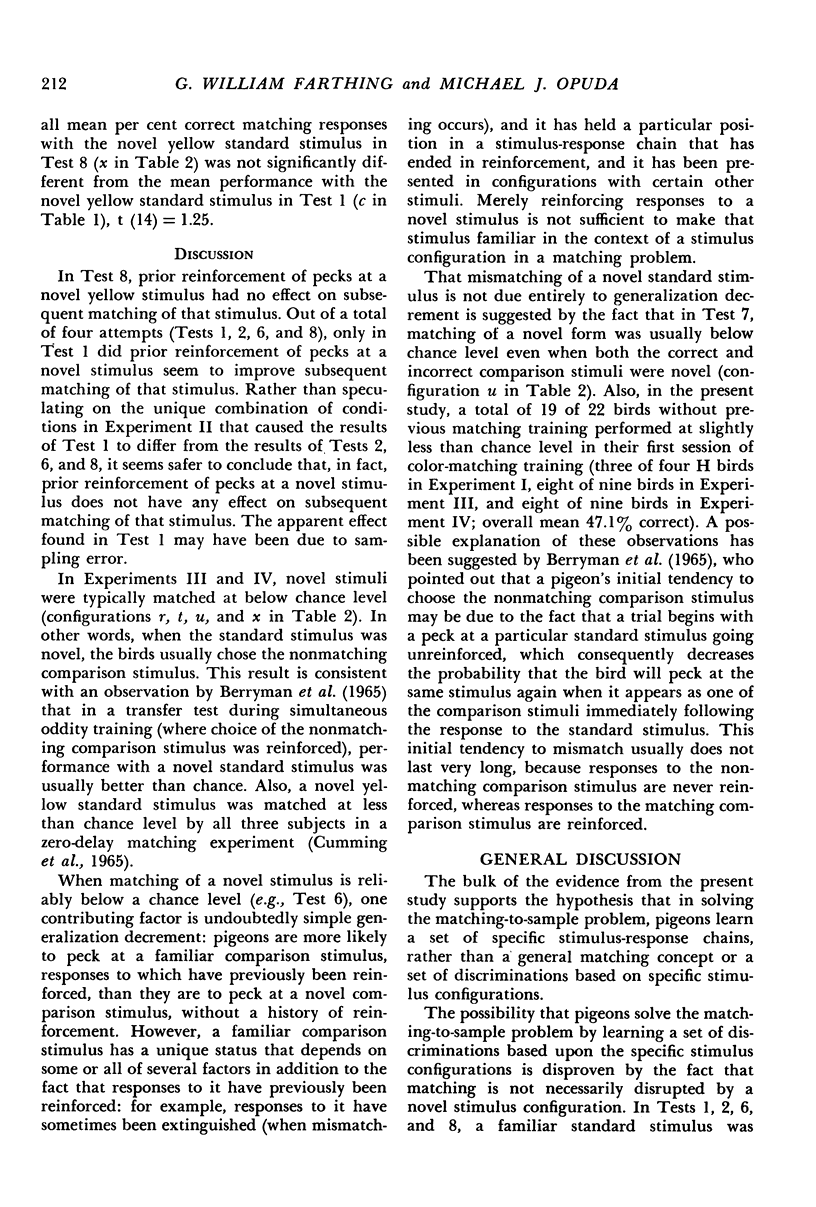

Selected References
These references are in PubMed. This may not be the complete list of references from this article.
- Berryman R., Cumming W. W., Cohen L. R., Johnson D. F. Acquisition and transfer of simultaneous oddity. Psychol Rep. 1965 Dec;17(3):767–775. doi: 10.2466/pr0.1965.17.3.767. [DOI] [PubMed] [Google Scholar]
- CUMMING W. W., BERRYMAN R. Some data on matching behavior in the pigeon. J Exp Anal Behav. 1961 Jul;4:281–284. doi: 10.1901/jeab.1961.4-281. [DOI] [PMC free article] [PubMed] [Google Scholar]
- Cumming W. W., Berryman R., Cohen L. R. Acquisition and transfer of zero-delay matching. Psychol Rep. 1965 Oct;17(2):435–445. doi: 10.2466/pr0.1965.17.2.435. [DOI] [PubMed] [Google Scholar]
- D'Amato M. R., Etkin M., Fazzaro J. Cue-producing behavior in the Capuchin monkey during reversal, extinction, acquisition, and overtraining. J Exp Anal Behav. 1968 Jul;11(4):425–433. doi: 10.1901/jeab.1968.11-425. [DOI] [PMC free article] [PubMed] [Google Scholar]
- Maki W. S., Jr, Leuin T. C. Information-processing by pigeons. Science. 1972 May 5;176(4034):535–536. doi: 10.1126/science.176.4034.535. [DOI] [PubMed] [Google Scholar]


